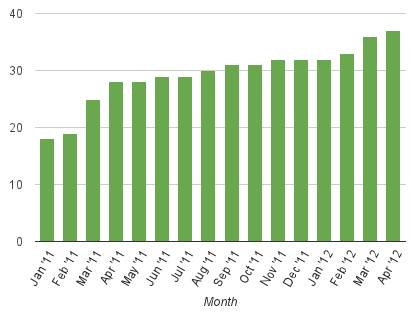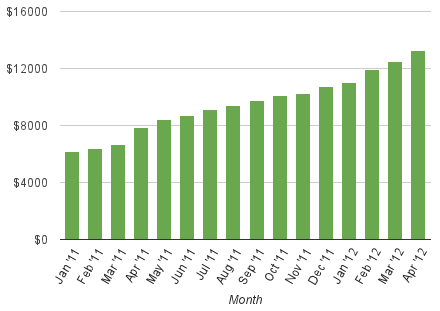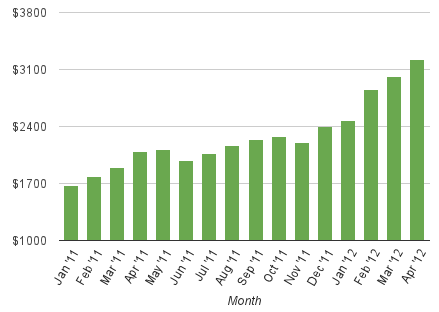In the first quarter of the year, the OMC virtual currency has gained both popularity and usefulness, with both the total currency in circulation and the number of grids it’s available for use on growing, which has also been reflected in the growing number of users.
The OMC, or Open Metaverse Currency, is a virtual currency from Austria-based Virwox that can be used to buy and sell virtual goods on OpenSim grids. The OMC can be traded in for real money like USD, GBP, CHF and EUR, and can also be traded in for the Second Life virtual currency, Linden dollars.
Because OMC is hypergrid-enabled, this means that instead of each grid having its own currency, just one universal currency can be used on multi-grid shopping trips — and merchants who accept OMC can sell to visitors from many different grids.
The OMC isn’t transferred from grid to grid, instead, it’s kept in an online Virwox account, requiring each transaction made inside a virtual world to be verified on their website. The status bar on the top of the viewers will show your current OMC currency balance if you are on an OMC enabled grid.
Virtual currency is used when buying virtual objects or obtaining services in a virtual world, and is popular for roleplaying games that take place in OpenSim. Virtual currency is also used by casinos in virtual worlds, since use of virtual currency instead of real currency can help circumvent laws against gambling.
Some grids have their own in-world currency, like InWorldz or 3rd Rock Grid, but these are closed grids and the money can not be used on any other grids.
One of the negative aspects of the OMC is that the security of the virtual money is dependent on the third party system. Grids can’t guarantee the safety as well as they could with their own currency system. Another danger is the merchants themselves. Because open grids, like OSGrid, allow so many people to connect regions, this means that there is a greater chance of illegitimate vendors.
Virwox has to improve each new grid before allowing its currency to be used there, and has also rolled out a Pocket Money feature
Growth

The number of grids the OMC is used on has increased from 32 at the beginning of the year to 37 on April 1 and includes such grids as the 202-region Grid Nirvana. This is the most growth since the beginning of 2011, according to data from Virwox.

The number of users registered saw steady growth over the course of 2011, and the first quarter of the year is no different. The number of users rose from 2,861 at the beginning of the year to 3,336 at the beginning of April.

Transactions between users of OMC has also increased steadily, from around $11,000 at the beginning of the year to around $13,000 at the beginning of March.

The amount of OMC in circulation dramatically rose over the first quarter of the year, going from around $2500 to around $3200. This is the first sharp increase in circulation since the beginning of 2011.
This is a tiny amount, not only because the currency is typically used for micro-transactions — often a few cents or less — but also because merchants and shoppers are still wary of doing business on the hypergrid, and many OpenSim users are not even aware that the possibility exists.
The OMC currency works independently of any particular grid, and is stored in the users’s Virwox account — very similar to the way that PayPal stores money for its users. Additional funds can be added or withdrawn from the account at any time.
And, as with PayPal payments in OpenSim, final authorization for each transaction takes place on the Virwox website, for maximum security. In addition, each grid that enables OMC has to be approved by Virwox.
OMC works with all existing Linden shopping scripts, so goods are delivered in-world at time of purchase. Merchants can scam the system — as they can in Second Life — by promising one product and delivering something else. However, a grid that doesn’t police its merchants and has too many complaints from shoppers stands to lose its OMC connectivity.
The OMC currency works across hypergrid teleports, so a shopper could travel to other grids to buy goods and bring them back to their own grid. However, with new improvements in hypergrid security, not all items may be transportable to other grids. Shoppers are urged to buy from merchants they know, or to experiment first with small items or freebies, to ensure that they can bring goods home.
The OMC isn’t just limited to shopping, however.
In addition to OMC, Virwox also trades C$, the Avination grid’s virtual currency, and Linden Dollars, the virtual currency in Second Life. Since the beginning of the year, the number of users registered with Virwox has grown from 43,388 to 49,484. Virwox has traded over 23 million USD worth of Linden Dollars.
- Firestorm opens office in OSGrid - October 17, 2012
- 5 ways to use achievements for viral marketing - September 12, 2012
- Cloud Party is a social platform, not a business venue - June 21, 2012
